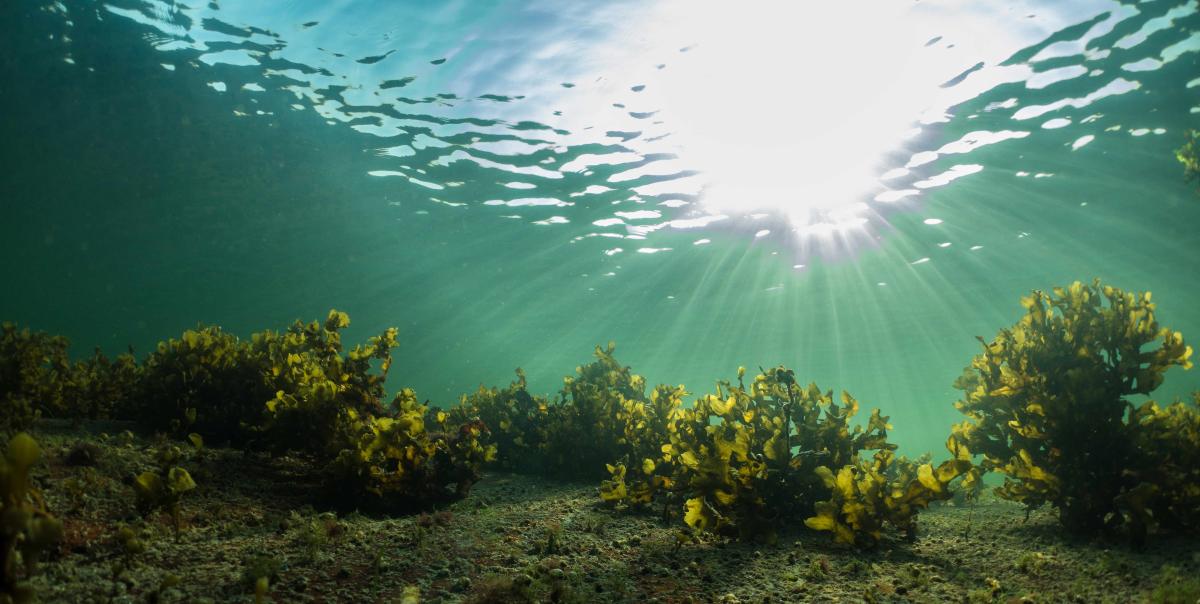
Coastal ecosystems sequester carbon from the atmosphere, help maintain high biodiversity levels, enhance water quality, protect coasts from extreme tidal events, and are an important resource for coastal communities. Despite the benefits they provide, coastal ecosystems are still poorly understood and face life-threatening pressures from human activities. As European coastlines lose their natural habitats rapidly, time is running out for action.
Coastal ecosystems, such as salt marshes, seagrass meadows, seaweed beds and mangroves can potentially sequester vast amounts of carbon dioxide from the atmosphere: some scientists estimate that seagrasses, which cover only 0.1% of the seafloor globally, could store up to 18% of the total carbon burial in the ocean. This stored carbon - often referred to as 'blue carbon' – can stay trapped for a long time. Seagrass meadows could keep carbon for several thousand years, for example³. But blue carbon is only one part – the key to adding coastal ecosystems to our climate mitigation repertoire is to look beyond the blue carbon they harbour.
"Carbon sequestration is just a fraction of the immense services delivered by coastal ecosystems, " explains Dr Claire Evans, Senior Research Scientist at the National Oceanography Centre in the United Kingdom. Like many other marine scientists, Dr Evans advocates for a holistic approach to considering coastal ecosystems. She explains that these habitats contribute to a healthier ocean by increasing biodiversity, improving water quality, stabilising the coastal floor, and protecting the coastline from extreme tidal events. All these are immensely valuable for the entire planet. “Coastal ecosystems are reservoirs of life,” says Dr Evans.
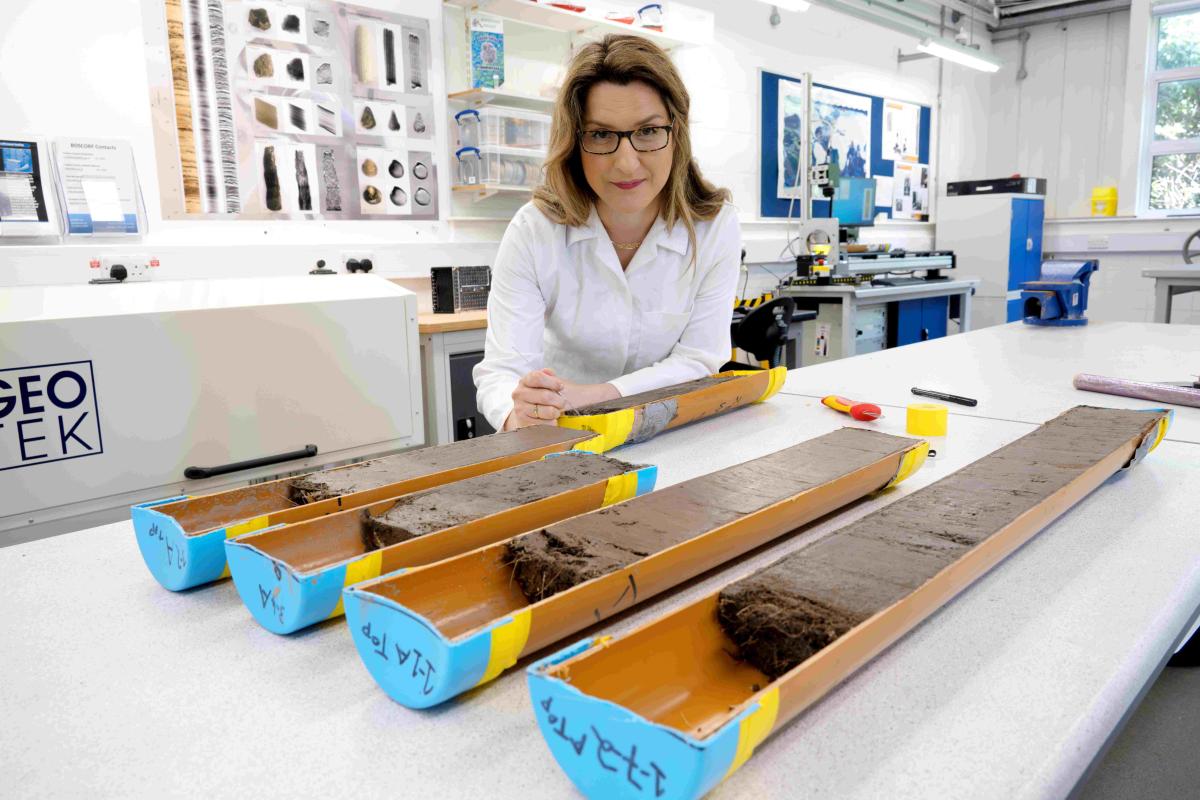
"We should focus on these multiple long-term benefits that coastal ecosystems deliver because they are much more important and impactful than just carbon sequestration. We know that having more biodiverse, resilient coasts will pay in the long run". Restoring coastal ecosystems to a healthy state initiates a positive dynamic, with impacts reaching far and wide. "In the Isle of Man, where I am from, we have noticed that marine protected areas boost fishing through a spillover effect," notes Dr Evans. She underlines that it is possible to reach a healthy state in coastal activities through education, political will and the integration of the local population into shoreline protection initiatives. "We will not be able to make change happen if we don't understand coastal communities,” continues Dr Evans. "Viewing those ecosystems from their cultural dimension is as important as considering the ecological aspects. All these parts interact. We need to learn from the traditional usages of the shoreline and integrate these insights into our conservation policies." Coastal ecosystems are part of an ensemble, where people and how they manage the surrounding land are essential in keeping coastal habitats healthy and functional. "Changes onshore directly impact the coast," adds Dr Evans. "It's useless to create a marine protected area in an environment that is being degraded by harmful land-management practices up the river. We must consider all the interconnected elements and keep the big picture in mind." This holistic approach to coastal ecosystems should also include the complete cycle of greenhouse gas fluxes, not just carbon uptake. From a climate mitigation perspective, this is critical.
Coastal ecosystems are reservoirs of life.
Dr Claire Evans, Senior Research Scientist, the National Oceanography Centre, UK
The emissions of coastal ecosystems
Coastal ecosystems are not just carbon sinks. They naturally emit carbon dioxide through respiration, releasing carbon directly into the atmosphere or water⁴. "Carbon emissions in coastal ecosystems vary a lot," explains Dr Florian Roth, marine scientist, former researcher and currently climate protection manager at the city of Wuppertal in Germany. "The changes depend on the surrounding conditions. Warmer temperatures, for example, can lead to higher respiration rates and increase the quantity of carbon released. But the variations also depend on the state of the ecosystem itself. Coastal ecosystems that are degraded, due to eutrophication or a disturbed environment, will tend to emit more carbon dioxide than healthy habitats."
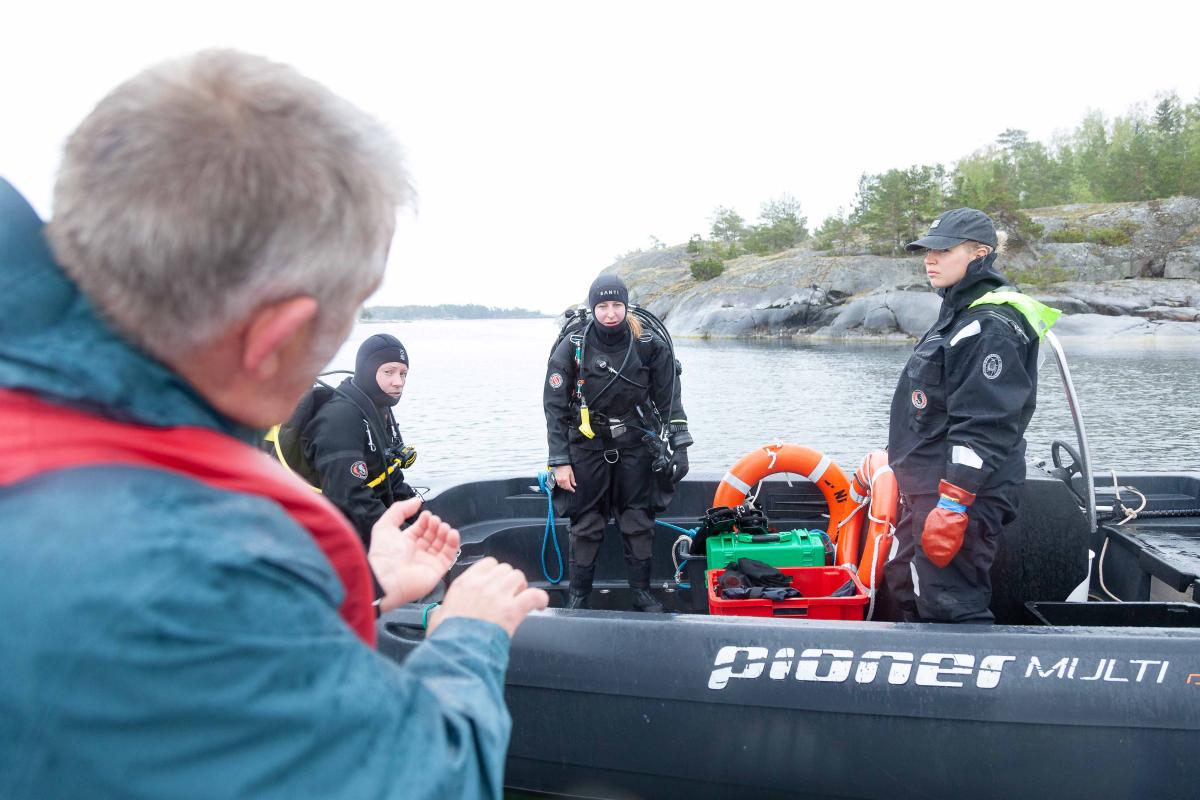
Coastal ecosystems also emit methane, a potent greenhouse gas with a much higher global warming potential than carbon dioxide. A recent study⁵ reports that the methane emitted by coastal ecosystems attenuates the benefits of carbon dioxide uptake by 28% to 35%. "Focusing only on carbon services brought by coastal habitats without considering their methane emissions would lead to a false, unrealistic and ultimately dangerous representation," explains Florian Roth, the lead author. By offsetting the carbon dioxide uptake with the emitted methane, the study aims to paint a more truthful and balanced picture of the role of coastal ecosystems in greenhouse gas mitigation, realistically lowering their overall potential. "Confirming that some coastal ecosystems emit methane is a first step," explains Florian Roth. "Now we need to get in-depth understanding if all coastal ecosystems emit methane, at what rate, under which conditions, and how much these emissions, as we suspect, are accelerated by climate change. There is much more to research," he concludes.
Focusing only on carbon services brought by coastal habitats without considering their methane emissions would lead to a false, unrealistic and ultimately dangerous representation.
Dr Florian Roth, ocean scientist specialised in carbon and nitrogen cycles in coastal seas.
Mounting pressures on European coastal ecosystems
For centuries coastal areas have been used as shelters, sources of food and income, but also as dumpsites, territories for urban expansion and recipients of land-based runoffs, resulting in a mass degradation of coastal ecosystems. "Some people see salt marshes as useless: you cannot walk in there, they are not picturesque, they are a bit scruffy and might be a reservoir for mosquitoes," explains Dr Amani Becker, a marine researcher at the National Oceanography Centre. "But salt marshes are an integral part of the European coastline and have a high ecological value. They belong there. We need them there," she adds.
This negative perception of coastal habitats has contributed to their destruction. The European Environment Agency (EEA) estimated in 2019 that Europe had lost more than half of its coastal ecosystems over the past century, with some areas experiencing losses of up to 80%, with knock-on effects on the species that depend on them⁶. Most threats have an economic origin where financial gain leads to destroying coastal ecosystems.
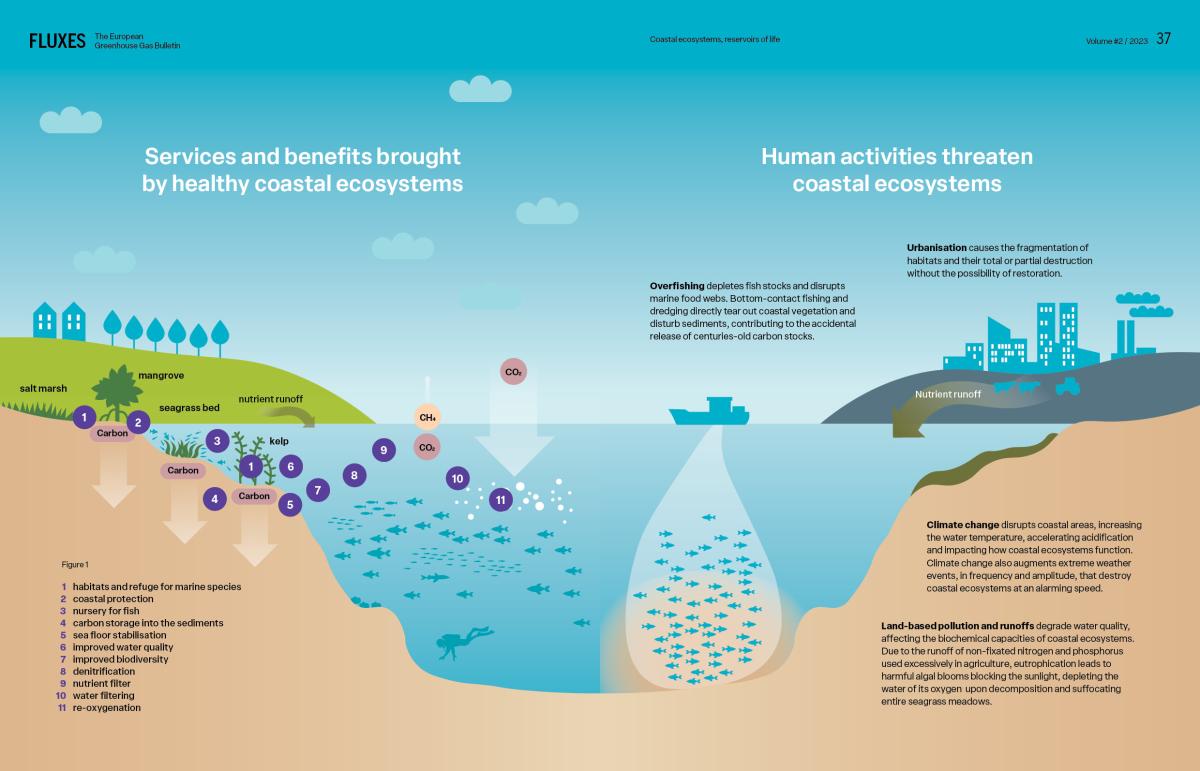
A lack of ground-based observations for coastal blue carbon
At the moment, the core ocean observation in ICOS is the partial pressure of carbon dioxide (pCO2), which determines whether the ocean is taking up or losing carbon dioxide. Some stations measure other carbon variables, and there are a variety of other ocean variables which could be considered.
Currently, almost all blue carbon observations around the world are project-based. There are almost no long-term studies, and there are few standardised measuring processes. "ICOS has a crucial role to play here," says Dr Richard Sanders, ICOS Ocean Thematic Center Director.
"The ICOS structure and philosophy are a perfect fit for developing new blue carbon observation stations. We should apply the long-term, collaborative, rigorous ICOS methodology to coastal ecosystem observations. We should have the same station labelling process for blue carbon as we have for the existing stations of the ICOS network." For Dr Sanders, blue carbon measurements and coastal ecosystem observations are decades-late compared to their terrestrial counterparts. "ICOS can get to grips with coastal blue carbon issues. The next step: get involved," he adds.
Measuring coastal blue carbon would require new and dedicated stations in strategic locations. "We should find new sites identified by geochemists and seafloor experts, and apply ICOS experience in standardising measurements to sediment core sampling, the primary method to measure blue carbon stocks,” Sanders continues. He is convinced that collaboration between research infrastructures is key: “We must engage with the scientific community on the coastal blue carbon measurement issues. Currently, ICOS is missing this land-ocean interface. We can collaborate with other research infrastructures, like JERICO and EMSO to build common goals focusing on long-term observations of blue carbon. We can use our knowledge to increase our capacity to address societal questions related to blue carbon, such as source attribution."
No system, natural or industrial, will be able to remove the 40 gigatons of carbon dioxide that humans emit yearly.
Dr David Ho, Professor of Oceanography, University of Hawaiʻi at Mānoa
Acting now for European coastal ecosystems
Local, regional, and national governing bodies and the European Union can act on five fronts to increase the healthiness of coastal ecosystems and the ocean.
- Save and protect existing coastal ecosystems before restoring the degraded ones "It is very challenging to restore coastal ecosystems because these habitats are often intertwined with their surrounding landscape and seascape," Dr Richard Lilley from Project Seagrass says. He explains that the physical environment changes when a coastal habitat, such as a seagrass meadow, disappears from a given location. "An entire area is disrupted, from the intergrity of the sea floor right through to the water quality at the surface. It takes time, and it is very complicated to re-create the favourable conditions for a new meadow to thrive. Older, preserved seagrass meadows tend to have higher biodiversity and other associated ecosystem benefits than newer, restored meadows. So the urgency is to save and protect what we have and then look to restore where appropriate," he continues. The deterioration of existing, older seagrass meadows could lead to the release of enormous quantities of carbon trapped in the sediments below. For Dr Richard Lilley, an efficient action plan could follow three phases. Save existing ecosystems by assessing them and then removing as many of the pressures as possible that are threatening them. Once the pressures are removed, then protect the area, enforce protection, and monitor progress. Finally restore degraded habitats, starting from protected areas and privileging large-scale projects and long-term planning for an increased success rate.
- Fund scientific research to tackle uncertainties on coastal ecosystems If parties to the Paris Agreement want to incorporate coastal ecosystems into their budgets and inventories, researchers need to better understand how these habitats work. "To start, we don't know how much carbon exactly is stored in coastal ecosystems all around the globe," says Dr David Ho, climate scientist, blue carbon expert and a Professor at the University of Hawaii at Manoa, Columbia University and l'École Normale Supérieure. More research is needed, especially at a time when private companies want to sell blue carbon credits to offset private emissions. "We have some ideas but don't know precisely where the blue carbon stored in sediments comes from and how much stays there or travels elsewhere,” Dr Ho explains. “We need to understand better how seaweeds, like kelp, contribute to storing carbon in the deep ocean. We also need to understand better the cycle of other greenhouse gases in coastal ecosystems, which is crucial for climate mitigation."
- Fund the development of ground-based greenhouse gas monitoring for coastal areas. "Two similar ecosystems will behave differently depending on a bundle of factors: we cannot just extrapolate measurements taken in one location to another," explains Dr Alf Norkko, the lead scientist at the ICOS Tvärminne station in Finland. "We need more long-term observation stations to track change over time in coastal ecosystems for all the greenhouse gases, not just for carbon. Just like we have been doing in forests for decades," he says. Denser ground-based measurements from coastal ecosystems would improve our understanding of these habitats. It would also contribute to calibrating satellites and verifying model-based predictions. Countries could verify their inventories and adapt their mitigation strategies accordingly. "We already have several ICOS ocean stations measuring essential surface variables, like carbon and nutrients," adds Dr Norkko. “It is crucial that we establish how carbon turnover and greenhouse gas emissions relate to the biodiversity and health of coastal communities. We also need to keep a holistic view and increase our current capacity to do long-term, continuous greenhouse gas measurements of coastal areas at the surface but also below, including in the sediments."
- Require that claims from offsetting initiatives based on coastal blue carbon be monitored, reported and verified to avoid greenwashing "In the current state of science," says Dr Norkko, "the carbon offsetting capacity of coastal ecosystems is based on extrapolations that don't consider methane emissions, generating false and potentially counterproductive values." Without an obligation to substantiate their claims through a scientific monitoring, reporting and verification system, companies could artificially increase their offsetting capacities for a profit, negating the actual objectives of emission offsetting. "Measuring carbon stocks once in an ecosystem barely gives a snapshot that will be rapidly outdated," continues Alf Norkko. "Monitoring over long periods allows for a more accurate picture while reporting and verification set accountability. Such a system would help to deter and avoid fraudulent claims."
- Reduce our emissions "Blue carbon cannot contribute to offset our emissions," asserts Dr Ho. "No system, natural or industrial, will be able to remove the 40 gigatons of carbon dioxide that humans emit yearly. Blue carbon is not for today but for tomorrow, when we are close to net zero and need to offset a small portion of our residual emissions. Today, we must focus on saving and protecting our coastal ecosystems for their intrinsic value and the socio-ecological benefits they provide. And we need to reduce our emissions. There is no alternative."
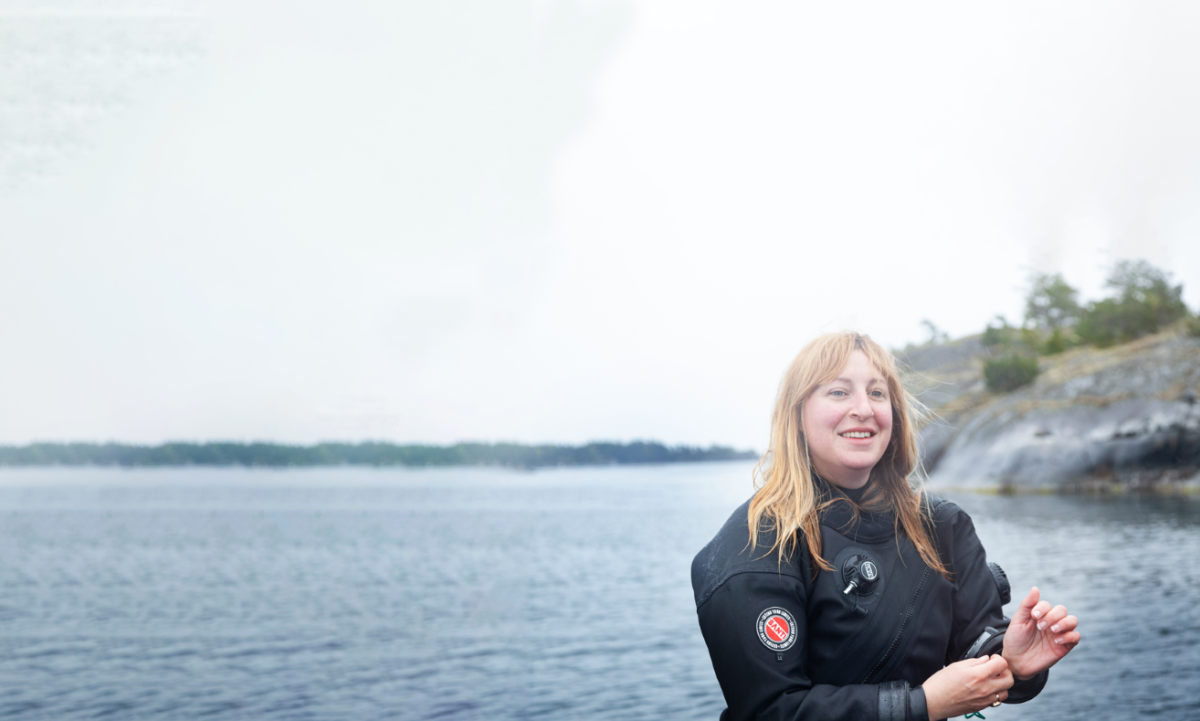
Dr Eugenia Apostolaki (Researcher at the Institute of Oceanography of HCMR), Hannah Muir MSc (PhD student at Swansea University and Student Fellow at National Oceanography Centre, Southampton), and Prof. Martin Zimmer (ZMT Bremen: Dept. Ecology - Mangrove Ecology) were also interviewed for this article. Dr Meike Becker (Researcher at the University of Bergen) and Richard Sanders have contributed to the table on ICOS measurements.
References
1 Lutz, S., Sevaldsen, P., Barnes, R., Nellemann, C., Corcoran, E., Duarte, C. M., ... & Grimsditch, G. (2009). Blue Carbon: The Role of Healthy Oceans in Binding Carbon. https://www.researchgate.net/publication/288341877_Blue_Carbon_-_The_Role_of_Healthy_Oceans_in_Binding_Carbon
2 Kennedy, H., Beggins, J., Duarte, C. M., Fourqurean, J. W., Holmer, M., Marbà, N., & Middelburg, J. J. (2010). Seagrass sediments as a global carbon sink: Isotopic constraints. Global biogeochemical cycles, 24(4) https://doi.org/10.1029/2010GB003848
3 Sinclair, E. A., Sherman, C. D., Statton, J., Copeland, C., Matthews, A., Waycott, M., ... & Kendrick, G. A. (2021). Advances in approaches to seagrass restoration in Australia. Ecological Management & Restoration, 22(1), 10-21. https://doi.org/10.1111/emr.12452
4 Mitrovic, S. M., & Baldwin, D. S. (2016). Allochthonous dissolved organic carbon in river, lake and coastal systems: transport, function and ecological role. Marine and Freshwater Research, 67(9), i-iv. https://doi.org/10.1071/MFv67n9_ED
5 Roth, F., Broman, E., Sun, X., Bonaglia, S., Nascimento, F., Prytherch, J., ... & Norkko, A. (2023). Methane emissions offset atmospheric carbon dioxide uptake in coastal macroalgae, mixed vegetation and sediment ecosystems. Nature Communications, 14(1), 42. https://www.nature.com/articles/s41467-022-35673-9
6 State of nature in the EU, Results from reporting under the nature directives 2013-2018, EEA Report No 10/2020. https://www.eea.europa.eu/publications/state-of-nature-in-the-eu-2020
